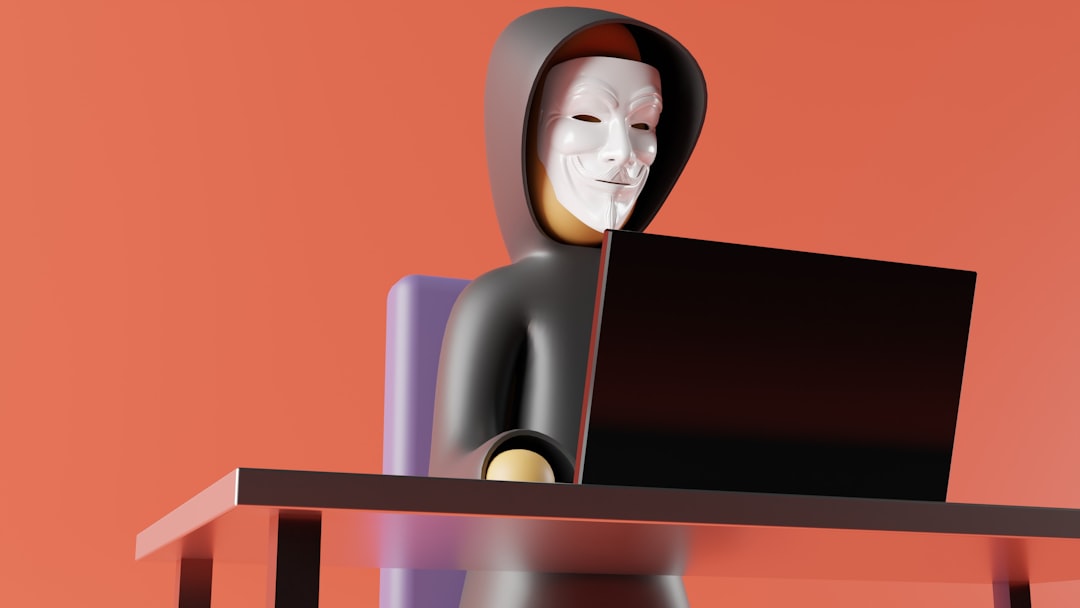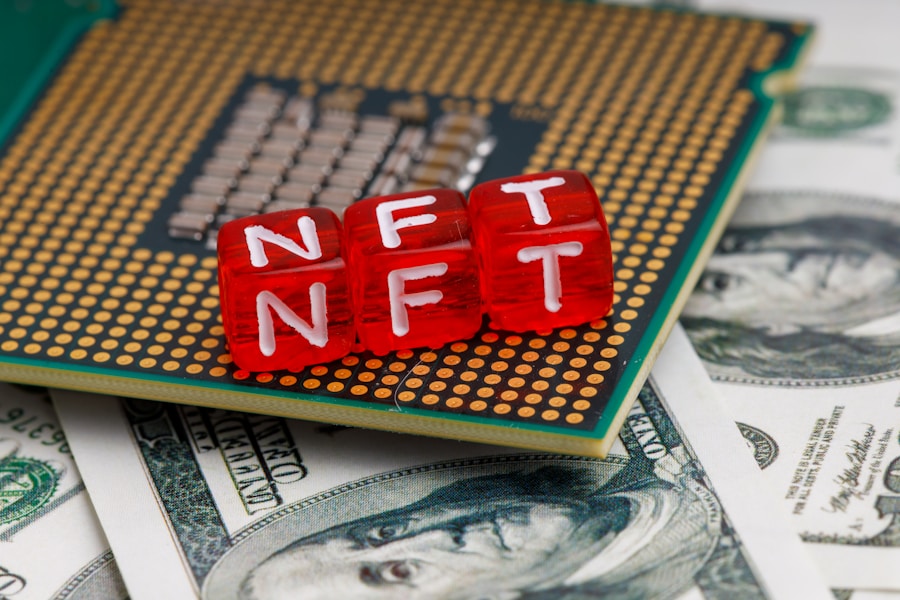Emonee LaRussa is a rising star in the world of NFT (non-fungible token) art. She is part of a new generation of artists who are leveraging blockchain technology to create and sell digital artworks. NFTs have gained significant attention and popularity in recent years, revolutionizing the art world and challenging traditional notions of ownership and value.
NFTs are unique digital assets that are stored on a blockchain, a decentralized digital ledger. Unlike cryptocurrencies such as Bitcoin, which are fungible and can be exchanged on a one-to-one basis, NFTs are indivisible and cannot be exchanged on a like-for-like basis. This uniqueness is what gives NFTs their value and has made them a popular medium for artists to showcase and sell their work.
Key Takeaways
- Emonee LaRussa is a rising NFT artist who has gained recognition for her unique and captivating digital artworks.
- NFTs have emerged as a new form of digital art that allows artists to sell their works as unique, one-of-a-kind assets on blockchain platforms.
- LaRussa’s journey to becoming an NFT artist involved experimentation with various digital art forms and a deep passion for exploring new creative possibilities.
- LaRussa’s NFT artworks are inspired by a range of themes, including nature, spirituality, and the human experience, and often feature vibrant colors and intricate details.
- As a rising NFT artist, LaRussa faces both challenges and opportunities, including the need to navigate a rapidly evolving market and the potential to reach a global audience through social media and other digital platforms.
The Emergence of NFTs: A Brief Overview
NFTs have been around for several years but gained mainstream attention in 2021 when digital artist Beeple sold an NFT artwork for a record-breaking $69 million at auction. This sale brought NFTs into the spotlight and sparked a frenzy of interest from artists, collectors, and investors alike.
The impact of NFTs on the art world has been significant. They have provided artists with new opportunities to monetize their work, bypassing traditional gatekeepers such as galleries and auction houses. NFTs have also challenged the notion of physical ownership, allowing collectors to own unique digital assets that can be bought, sold, and traded on various online platforms.
Emonee LaRussa’s Journey to Becoming an NFT Artist
Emonee LaRussa comes from a background in traditional art forms such as painting and sculpture. She began her career as a traditional artist, exhibiting her work in galleries and participating in art fairs. However, she became intrigued by the possibilities of NFTs after hearing about the success of artists like Beeple.
LaRussa decided to explore the world of NFTs and quickly realized the potential it held for her as an artist. She saw NFTs as a way to reach a global audience and connect with collectors who were interested in digital art. LaRussa made the decision to pivot her career and become an NFT artist, embracing the opportunities and challenges that came with this new medium.
The Inspiration Behind Emonee LaRussa’s NFT Artworks
Emonee LaRussa’s creative process is deeply rooted in her personal experiences and emotions. She draws inspiration from her surroundings, nature, and the human condition. Her artworks often explore themes of identity, spirituality, and the interconnectedness of all things.
LaRussa’s artworks are characterized by vibrant colors, intricate patterns, and a sense of movement. She uses digital tools to create her artworks, combining traditional artistic techniques with cutting-edge technology. Her works often feature organic shapes and abstract forms, inviting viewers to interpret and engage with them on a personal level.
The Unique Characteristics of Emonee LaRussa’s NFT Artworks
One of the unique characteristics of Emonee LaRussa’s NFT artworks is the technical aspect of her creations. She leverages digital tools and software to create intricate and detailed artworks that would be difficult to achieve using traditional mediums. This allows her to experiment with different techniques and push the boundaries of what is possible in art.
Another unique aspect of LaRussa’s artworks is the use of blockchain technology. Each artwork is minted as an NFT on a blockchain platform, ensuring its authenticity, provenance, and ownership. This adds a layer of transparency and security to the art market, addressing concerns about counterfeiting and fraud.
Furthermore, LaRussa’s artworks are often interactive, allowing viewers to engage with them in a dynamic and immersive way. This interactive element adds a new dimension to the viewing experience, blurring the lines between art and technology.
The Challenges and Opportunities of Being a Rising NFT Artist

While NFTs have opened up new opportunities for artists like Emonee LaRussa, they also come with their own set of challenges. One of the main challenges is the competition in the NFT space. With the barrier to entry relatively low, there is a flood of artists entering the market, making it difficult for individual artists to stand out and gain recognition.
To succeed as an NFT artist, constant innovation is key. Artists need to stay ahead of trends, experiment with new techniques, and push the boundaries of what is possible in digital art. This requires a willingness to adapt and evolve, as well as a deep understanding of the technology and platforms that support NFTs.
However, being a successful NFT artist also presents significant opportunities. The potential for financial success is one of the main attractions for artists entering the NFT space. With high-profile sales and increasing demand for digital art, artists have the opportunity to earn significant income from their creations.
The Future of NFTs: Perspectives from Emonee LaRussa and the Rising NFT Artists
Emonee LaRussa and other rising NFT artists believe that NFTs have the potential to revolutionize the art world. They see NFTs as a way to democratize art, allowing artists from all backgrounds and locations to showcase their work on a global stage. NFTs also have the potential to challenge traditional notions of ownership and value, opening up new possibilities for collectors and investors.
However, there are also challenges and opportunities that lie ahead for NFT artists. As the market becomes more saturated, artists will need to find innovative ways to differentiate themselves and capture the attention of collectors. They will also need to navigate the evolving regulatory landscape and address concerns about the environmental impact of blockchain technology.
The Role of Social Media in Promoting and Selling NFT Artworks
Social media plays a crucial role in promoting and selling NFT artworks. Platforms such as Twitter, Instagram, and TikTok have become important tools for artists to showcase their work, connect with collectors, and build a following. Artists can use these platforms to share their creative process, engage with their audience, and generate buzz around their NFT releases.
Strategies for promoting and selling NFT artworks on social media include creating engaging content, collaborating with influencers, and leveraging the power of hashtags and trending topics. Artists can also use social media to build a community around their work, fostering a sense of belonging and loyalty among their followers.
Social media has the potential to democratize the art world by giving artists direct access to a global audience. It allows artists to bypass traditional gatekeepers and establish their own brand and reputation. This has opened up new opportunities for emerging artists like Emonee LaRussa to gain recognition and success.
Advice for Aspiring NFT Artists: Insights from Emonee LaRussa and the Rising NFT Artists
Emonee LaRussa and other rising NFT artists offer valuable insights for aspiring NFT artists. They emphasize the importance of finding your own voice and staying true to your artistic vision. In a crowded market, it is essential to stand out and create work that is unique and authentic.
Constant experimentation and innovation are also key to success in the NFT space. Artists should not be afraid to push the boundaries of what is possible in digital art and explore new techniques and technologies. This willingness to take risks and embrace change is what sets successful NFT artists apart from the rest.
Community and collaboration are also highly valued in the NFT space. Artists can benefit from joining online communities, participating in collaborations, and supporting other artists. Building relationships and fostering a sense of community can lead to new opportunities and help artists navigate the challenges of the NFT market.
The Significance of NFTs in the Contemporary Art World
NFTs have emerged as a significant force in the contemporary art world, challenging traditional notions of ownership, value, and medium. Artists like Emonee LaRussa are leveraging blockchain technology to create and sell digital artworks, reaching a global audience and connecting with collectors in new and exciting ways.
While NFTs present challenges and opportunities for artists, they also have the potential to democratize the art world and revolutionize the way art is created, bought, and sold. As the market continues to evolve, it will be interesting to see how NFTs shape the future of art collecting and the role of artists in the digital age.
In Conversation with Rising NFT Artists: Emonee LaRussa is an insightful interview that delves into the world of NFT art and the creative process behind it. If you’re interested in staying up-to-date with the latest news and trends in the NFT space, I highly recommend checking out the NFT Newsletter. This informative platform covers a wide range of topics related to NFTs, including industry updates, artist spotlights, and investment tips. For example, their article “10 Simple Tips to Improve Your Test-Taking Skills” offers valuable advice for anyone looking to enhance their performance in exams or assessments. With a diverse range of content, the NFT Newsletter is a must-read resource for both NFT enthusiasts and those looking to expand their knowledge in this exciting field.
FAQs
What is an NFT?
An NFT, or non-fungible token, is a unique digital asset that is verified on a blockchain network. It can represent anything from art to music to tweets.
Who is Emonee LaRussa?
Emonee LaRussa is a rising NFT artist who creates digital art pieces that explore themes of identity, culture, and spirituality.
What kind of art does Emonee LaRussa create?
Emonee LaRussa creates digital art pieces that are often inspired by her own experiences and cultural heritage. Her work often features bold colors and intricate patterns.
How does Emonee LaRussa sell her NFTs?
Emonee LaRussa sells her NFTs through various online marketplaces, such as OpenSea and Nifty Gateway. She also occasionally sells her work through physical galleries.
What is the process of buying an NFT?
To buy an NFT, you typically need to have a cryptocurrency wallet and some form of cryptocurrency, such as Ethereum. You can then browse NFT marketplaces and bid on or purchase the NFT you are interested in.
Why are NFTs becoming popular?
NFTs are becoming popular because they allow creators to monetize their digital creations in a way that was previously difficult or impossible. They also provide a way for collectors to own unique digital assets that can appreciate in value over time.














